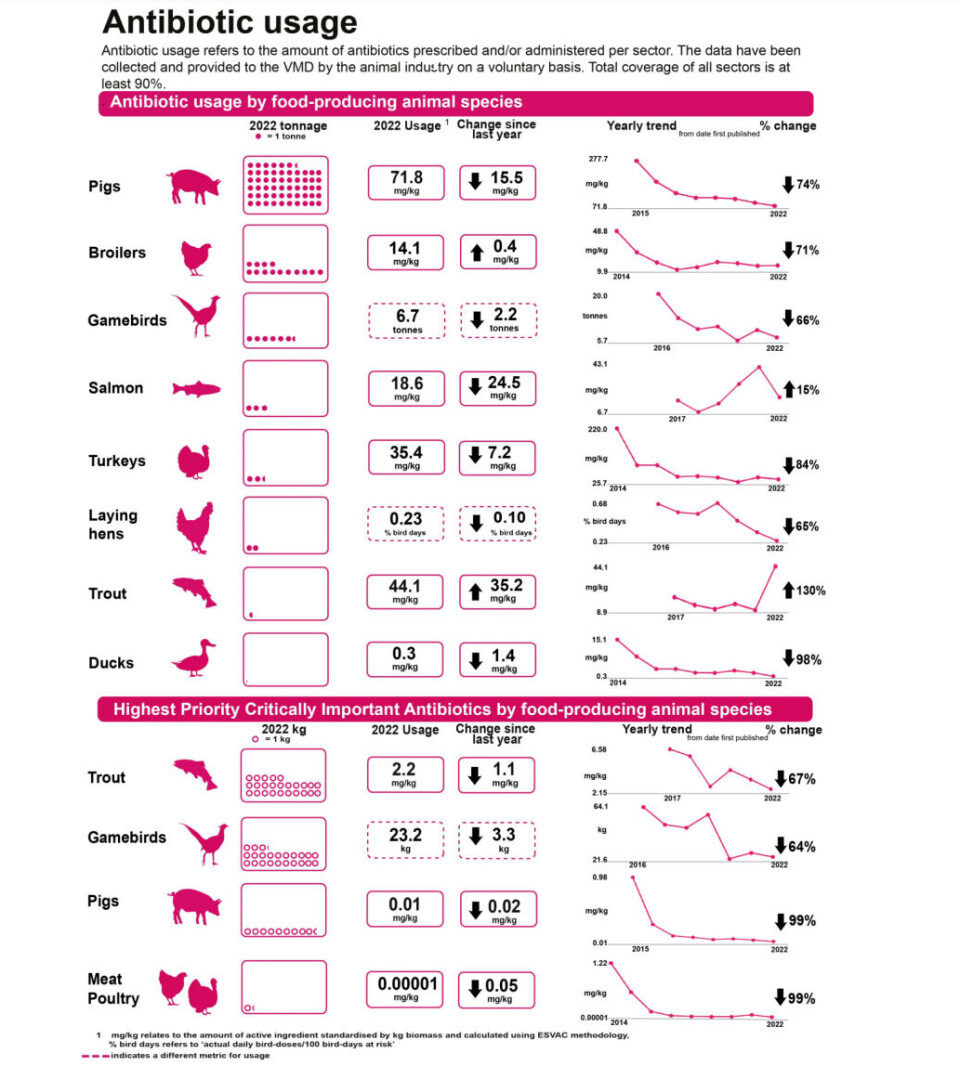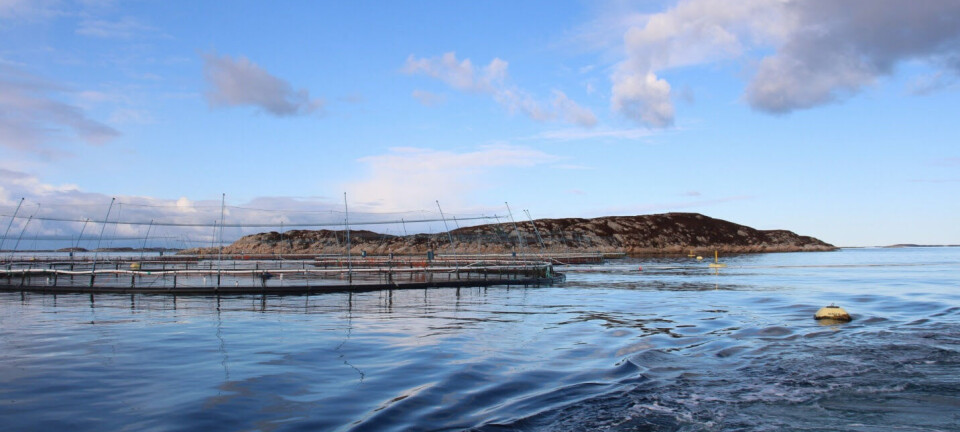
Scottish salmon farming antibiotic use fell by 64.5% last year
Fewer than 1 in 10 farms had to treat fish with antimicrobials
Scotland’s salmon farming companies have reduced antibiotic medicine use by more than half in the space of a year.
A new report published by the UK Government has highlighted the sharp downward trend which follows the challenges of Covid-19 when fish had to be kept in the sea for longer in 2021. Protecting the health of larger fish needed extra care, including, in some cases, antibiotics to treat bacterial challenges.
The new Veterinary Medicines Directorate’s Veterinary Antimicrobial Resistance and Sales Surveillance (VARSS) report shows that 2022 usage of antibiotics in salmon was 18.6 mg/kg, down 24.5 mg/kg since 2021, although antibiotic use rose in the trout farming sector.
The level for pig farming was 71.8 mg/kg and 35.4 mg/kg in turkeys, while the sheep and cattle sectors do not publish full data.
3,141kg of antibiotics
Last year, fewer than one in ten seawater salmon farms used antibiotics and those that did so used less than half the amount of the previous year, indicating that the environmental challenges which could be managed through antibiotics had dissipated in 2022.
The amount of antibiotics used last year was 3,141kg, which was 64.5% less than in 2021 and only slightly more than when this information was first recorded in 2017 (3,053kg).
Scottish salmon farmers continue to publish antibiotic use data covering 100% of the sector.
Trade body Salmon Scotland said the salmon sector does not use any antibiotics that have been identified as high priority for human health and there is no trace of antibiotics making its way into the food chain.
Used responsibly
Salmon Scotland’s head of technical, Dr Iain Berrill, said: “Like any medicine, antibiotics are used responsibly, sparingly and only when required in the health and welfare interests of our fish, and only under prescription from licensed veterinarians.
“The requirement to protect our fish from environmental challenges meant a significantly lower level of antibiotics were used in the past 12 months on a very small number of farms.
“As part of our commitment to transparency, we aim to reduce use as low as possible to give consumers full confidence when they enjoy one of the most nutritious and tasty foods we produce in Scotland.”

Antibiotic use in trout farming increased by 35.2 mg/kg between 2021 and 2022 from 9.0 mg/kg to 44.1 mg/kg.
This is the highest use seen in the trout sector since data was first published in 2017 and was due to an outbreak of Aeromonas salmonicida on a small number of production sites. The only HP-CIA (highest priority critically important antibiotic) used in trout is the quinolone oxolinic acid, and its use reduced from 3.2 mg/kg in 2021 to 2.2 mg/kg in 2022, which represents a 67% reduction since 2017.
“The significant rise in this year’s antibiotic use figures (for 2022) are due to an outbreak of Aeromonas salmonicida on a small number of production sites with rainbow trout at a large size and therefore high biomass, meaning that antibiotics were needed for treating disease that would otherwise have had welfare consequences,” the British Trout Association explains in the VARSS report.
“This event is not anticipated to recur, and it is expected that the trout sector will fall back below the industry target of 20 mg/kg in 2023.”
























































